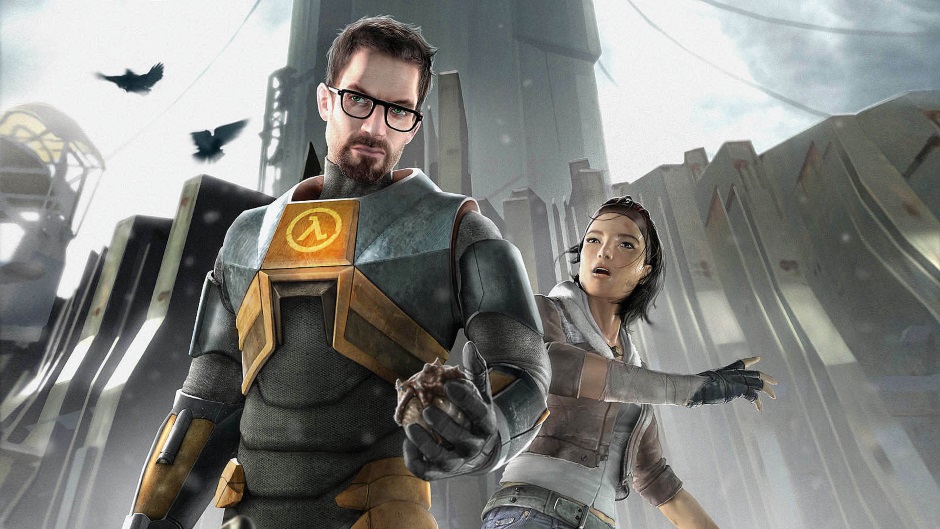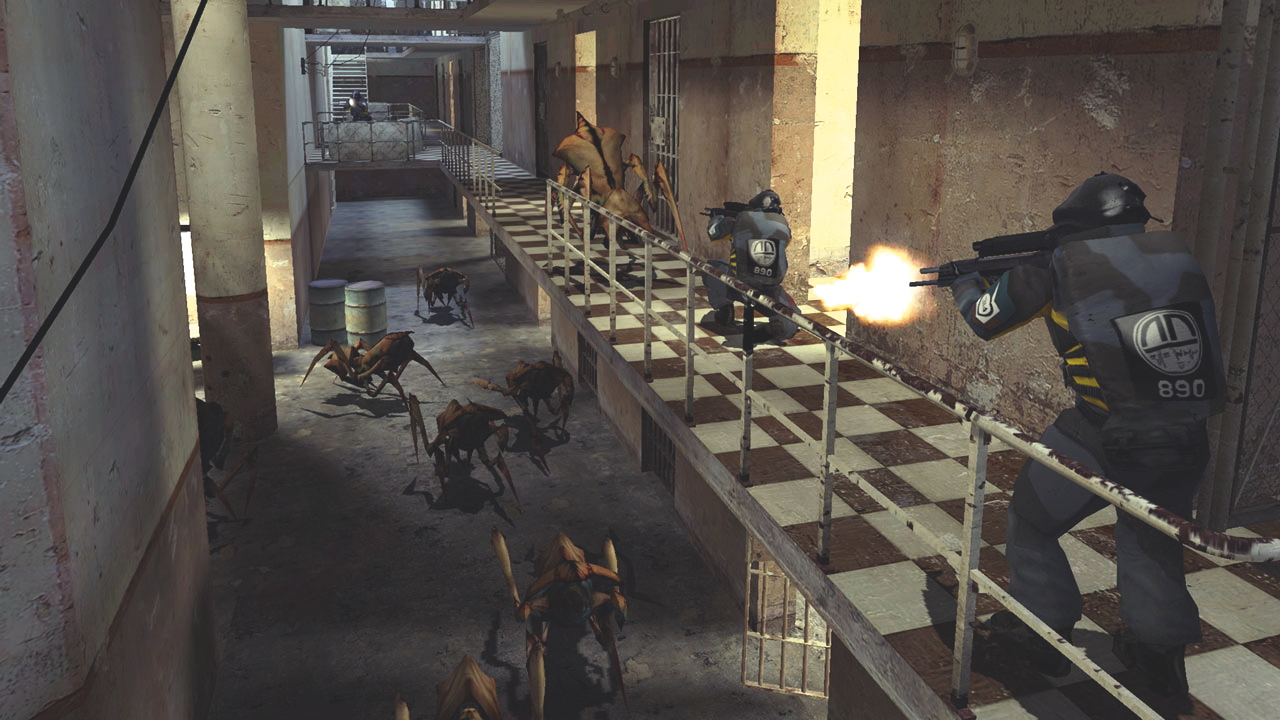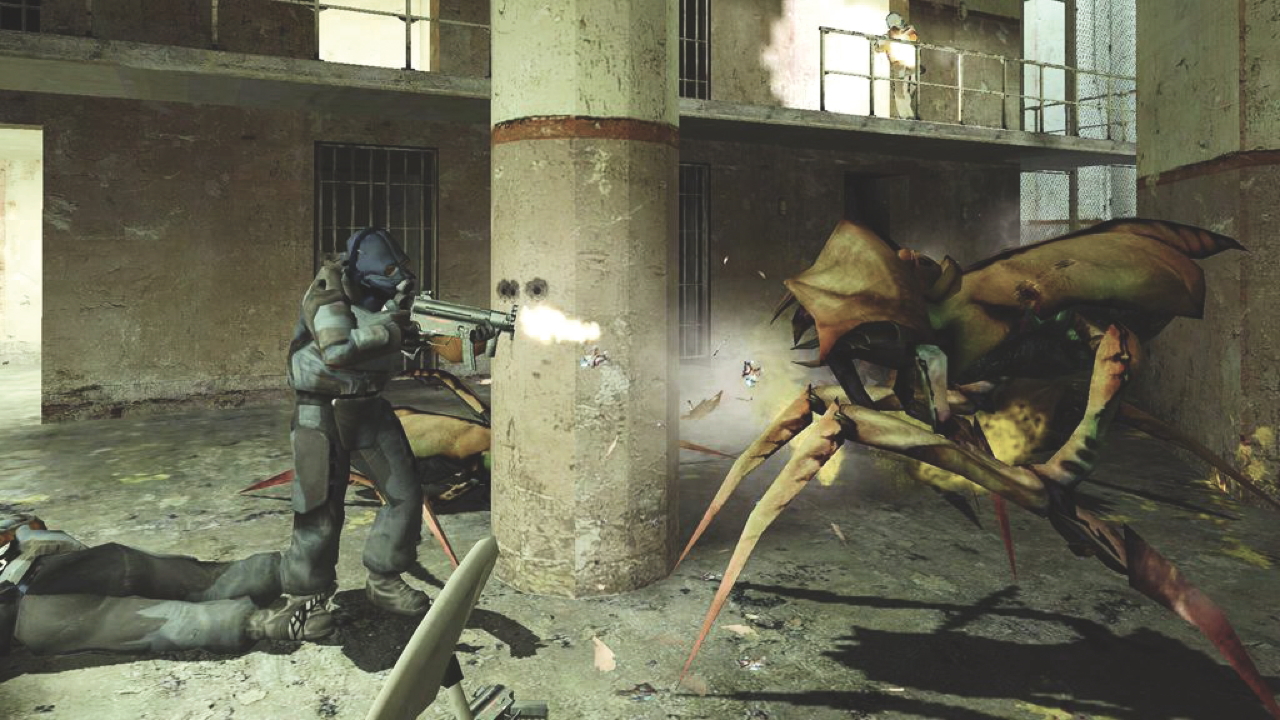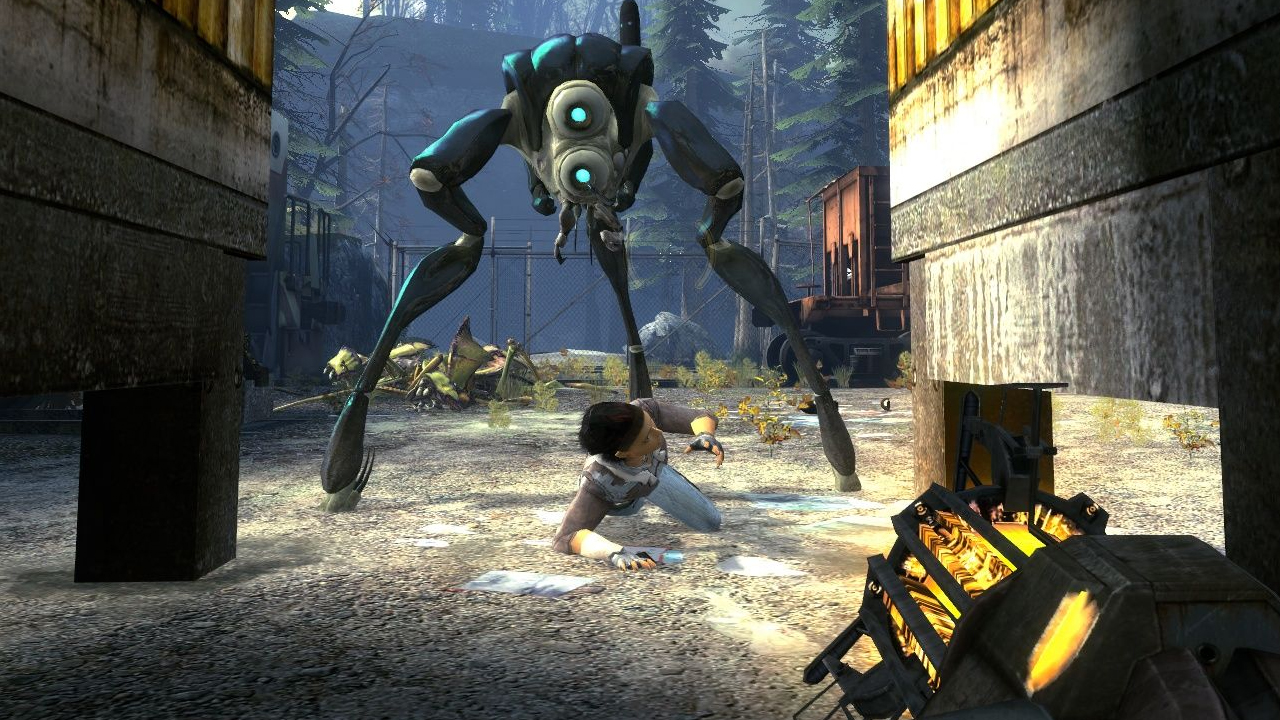How Valve cracked open the FPS formula and then put it back together in Half-Life 2

Gordon Freeman has nothing to say. Well, not verbally anyway. As one of gaming’s best-known silent protagonists, he has no syllables to utter and no quips to dispense. Freeman’s lack of chat is a deliberate black hole of meaning. And yet that’s exactly what Valve needed to craft an FPS renowned for storytelling as much as shooting.
Freeman, you see, is the perfectly engineered observer and vessel. Here is a character so flimsy that his silhouette slips away from your mental grasp like soap in the bath, leaving behind only a crowbar, a pair of glasses and a HEV suit. Even his face is a disturbingly literal interpretation of the everyman, based on a recombination of male Valve employees (he has no full in-game model). He is silent so that Valve’s world can speak. He is transparent so that your immersion in its action and its story remain uninterrupted.

And what a scenario you are drawn into. Freeman is brought out of stasis after his take-it-or-leave-it job offer at the end of the first game to find that Portal storms have ravaged the planet and Earth has surrendered to the otherworldly Combine following total defeat in the Seven Hour War. Humanity’s reign is done, as you can clearly see etched into the faces of the cowed peons that filter through the dilapidated train station you alight into. All that’s left is to stick one in the fat folds of your new telepathic slug oppressors.
Even this initial shot establishes how Valve intends to relay its fiction: by showing first, and with telling a distant second. You don’t need a chunk of exposition to clarify the dynamic between the gun-cradling Civil Protection officers on one side of a cattle cage and the gaunt, dirty humans that shuffle these halls (though you can talk to the denizens to better understand their misery). And while you can’t avoid the omnipresent face of Dr Wallace Breen, Earth’s administrator, delivering the first of his ‘Breencasts’, nothing forces you to stop and absorb details of this suppression field.

So whether you’re here for a story or just want to blow away some aliens, Valve does what it needs to with curt efficiency, by setting up an Orwellian regime of brutal intolerance couched in double-speak (“our benefactors”), demonstrating the stakes and giving us a villain to topple. But then the big V goes one step further and makes it personal. Before you’re given any means of reprisal, an officer casually knocks a can from the top of a bin and demands that you pick it up. Disobey and he’ll knock you about with his stun baton. In part, it’s a small tutorial on how to work with the Source engine’s physics, but nothing reinforces the jackbooted cruelty on display so much as being subject to it yourself. It also draws out a primal urge to punish those who make you suffer. Expertly manipulated or not, It’s hard not to draw some grim satisfaction the first time you bury Freeman’s crowbar in one of those stupid, masked faces.
Freeman has his signature weapon, but Half-Life 2 has its own: the Gravity Gun. (Yes, okay, we mean the Zero Point Energy Field Manipulator. Nerd.) This gun-cum-physics tool distorts the fabric of the game, to the point that headcrab-zombie-infested secret city Ravenholm – Half-Life 2’s sharp left-turn into horror film territory – was transplanted out of intended sequence so Valve could justify us flinging circular saw blades and flammable canisters at its possessed inhabitants. The Gravity Gun has other combat purposes, such as returning a grenade to its sender, but it speaks loudest about Valve’s intentions. According to the dev’s managing director, Gabe Newell, one of the team’s key design goals was to make Half-Life 2’s world feel more interactive and less like a stage. In the Gravity Gun, Valve grants itself a licence for physics puzzling and comedy, as well as a rare sense of physicality.

Comedy? Yep, because long before the ragdoll anarchy of the Gravity Gun’s supercharged form, Half-Life 2 lets you paint an onrushing enemy with a lobbed can of white paint, or batter them ineffectively with a cardboard box. Far from undercutting the grim future the game depicts, this humanises its harder sci-fi edges and makes it more effective. No one needs a little laugh more than those whose future is darkest, after all.
Weekly digests, tales from the communities you love, and more
Despite how marvellously effective physics is as a binding agent for both atmosphere and gameplay, there was a time when Valve considered it an incredibly risky gambit to include at all. Before Half-Life 2 came out in 2004, the last well-known game to pin its hopes on a more physical game world was 1998’s Trespasser. This spin-off of Jurassic Park was no clever girl, but a critical and commercial failure for the ages, due to its weightless objects and interminable box-stacking puzzles.

It’s not that every physics element in Half-Life 2 is a winner – weighing down a ramp so you can drive a floaty hovercraft over it feels more like a tech demo than a puzzle. But when these sometimes finicky elements do work, it’s for the betterment of the game, and represents a huge achievement for Valve’s risk-taking.
That pioneering spirit is commonly overshadowed by the other things Half-Life 2 does so well. But for a game filled with new ideas and toys, that’s easy to do. The game continually reinvents itself from your early escape from City 17 right up to your inevitable return. Water Hazard and Highway 17 take detours into vehicle combat, for example, as well as problem solving on a different scale. Sandtraps grant you the use of Antlion Pheropods and with them the ability to command a force of giant bugs, which can be used to mark enemies for a gruesome nibbling, and to summon drones to use as meat shields. Striders – towering mechs engineered by the Combine – force you to use cover and hit-and-run tactics, their tripod design and dominating presence like something out of War Of The Worlds.

Adding to all the excitement are ricocheting energy balls that introduce a deadly little game of Super Breakout into the chaos of a firefight. Valve feared making a shooting gallery, and responded with a riot of gameplay ideas, granting the kind of variance that is still rare enough to be applauded 12 years later.
But it’s not the toys or the plot, or even the physics, that make City 17 worth revisiting. There’s an intangible secret ingredient that has earned this game its place in history and a Game Of The Decade Award: consistency. It’s not that every element is of the same quality, but that every part of the game hangs together and supports the others in a vast, complex ecosystem of complementary design.

So the story is told not just by our main actors performing in front of us, but in family photos on Eli Vance’s desk, newspaper clippings on Dr Isaac Kleiner’s lab wall and sad skeletons in the houses on Highway 17. It’s told by architecture and graffiti and decor. Little microtales pop up everywhere you go –look for it and you can see evidence of the Combine draining the seas (once planned as a more major plot point), most obviously in the landlocked dock towards the start of Highway 17. Homes are filled with bric-à-brac: pans still on the stove; mattresses stuffed in attics. This doesn’t seem like a surprising amount of detail by today’s HD standards or examples of world building, but it’s just the right sprinkling of mundanity to ground the unthinkably obsidian panels of alien metal eating away at the rundown tenements. It makes you feel for those who used to live there.
Likewise, the physics isn’t just deployed for Gravity Gun puzzles, but for player guidance and interaction (the crowbar also plays its role, becoming a “feeler” in Newell’s words). And though the toys often feel like pre-packed ideas that provide a sparkling hint of novelty, taken together they offer a building repertoire of tricks and aids that vary the rhythm of play. Amazingly, across all this, there are few genuine lows.

And how very Valve that so much of that comes down to its development structure, where teams were split up into ‘cabals’ of different design disciplines. Even choosing the name ‘cabal’ – which refers to a secret political faction – is fitting for a company that shrouds itself in obscurity. If you think about it, Valve practically used Half-Life 2 as a Trojan horse for its now-ubiquitous Steam service. Each cabal would take ownership of a particular aspect of the game, so that, for instance, level designers could make satisfying spaces with simple prototypes, until they were ready for artists to take over and turn them into credible places.
But even this process wasn’t enough. For Half-Life 2, Valve created a Panopticon-like ‘cabal cabal’, which amalgamated members of several different teams. This group took on the responsibility of pulling back focus, ensuring that the high-level goals of consistent quality and entertainment were met. That’s why so much in Half-Life 2 is only glimpsed, but also why it’s held up to scrutiny for more than a decade. In its pursuit of excellence, Valve elected to give us only its best.

Returning to Combine-infested Earth today is more than a mere act of nostalgia or historical tourism, then. Yes, you can spend time in the company of one of the best female wingmen in games, the kickass resistance fighter Alyx Vance, or see where Andrew Ryan from BioShock potentially picked up his oration skills. But that’s not why a quick trip down the train tracks with a crowbar won’t end until you topple the Combine Citadel and all its inhabitants.
Half-Life 2 is a game made to immerse on every level, through a combination of world-building, puzzles and combat, and while it has inevitably fallen behind visually since 2004, Freeman still fades away just as competently as ever, leaving no barrier between you and one of gaming’s best-realised adventures.
This article originally appeared in Official PlayStation Magazine. For more great PlayStation coverage, you can subscribe here.



